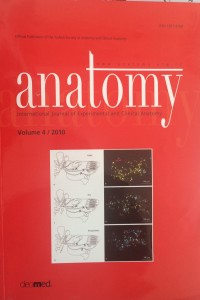Gender differences in the mediolateral placement of the patella and tibial tuberosity: a geometric analysis
Abstract
Objectives: The relative positions of the tibial tuberosity and the center of patella are crucially important to determine the Q angle. The aim of this study was to evaluate a geometric method to analyze the positions of the center of patella and the tibial tuberosity, to document and discuss possible sexual differences.
Methods: One hundred paired limbs (50 males and 50 females) of healthy adult Indian volunteers were studied. Trigonometric analysis was used to accurately determine the relative positions of the center of patella and the tibial tuberosity with respect to the medial and lateral joint lines. Two ratios R1 and R2 determined mediolateral placement of the center of patella and tibial tuberosity. Gender differences were documented using appropriate statistics.
Results: The center of the patella was more medially placed with respect to the joint lines in females. The mean values of R1 were not significantly different in males (1.48±1.02) and females (1.51±0.62). The tibial tuberosity was usually more laterally placed with respect to the joint lines. The mean values of the tibial tuberosity were significantly greater in females (2.09±0.90) as compared to males (1.29±0.67).
Conclusion: In supine position, the tibial tuberosity was significantly placed more laterally in females possibly contributing to a greater Q angle in females.
Details
| Primary Language | English |
|---|---|
| Subjects | Health Care Administration |
| Journal Section | Articles |
| Authors | |
| Publication Date | October 1, 2010 |
| Published in Issue | Year 2010 Volume: 4 Issue: 1 |
Cite
Anatomy is the official journal of Turkish Society of Anatomy and Clinical Anatomy (TSACA).


